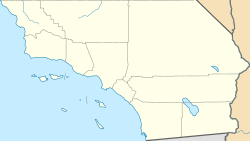
The Sikorsky H-19 Chickasaw is a multi-purpose piston engined helicopter that was used by the United States Army and United States Air Force. It was also license-built by Westland Aircraft as the Westland Whirlwind in the United Kingdom. United States Navy and United States Coast Guard models were designated HO4S, while those of the U.S. Marine Corps were designated HRS. In 1962, the U.S. Navy, U.S. Coast Guard and U.S. Marine Corps versions were all redesignated as H-19s like their U.S. Army and U.S. Air Force counterparts.
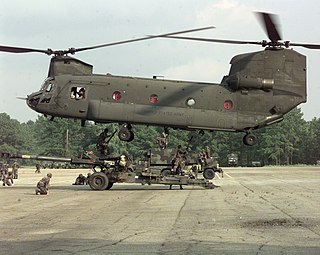
Boeing Rotorcraft Systems is the former name of an American aircraft manufacturer, now known as Vertical Lift division of Boeing Defense, Space & Security.
Piasecki Helicopter Corporation designed and manufactured helicopters in Philadelphia and nearby Morton, Pennsylvania, in the late 1940s and the 1950s. Its founder, Frank Piasecki, was ousted in 1956 and started a new company, Piasecki Aircraft. Piasecki Helicopter was renamed Vertol Corporation in early 1956. Vertol was acquired by Boeing in 1960 and renamed Boeing Vertol.

The Piasecki X-49 "SpeedHawk" is an American four-bladed, twin-engined experimental high-speed compound helicopter developed by Piasecki Aircraft. The X-49A is based on the airframe of a Sikorsky YSH-60F Seahawk, but utilizes Piasecki's proprietary vectored thrust ducted propeller (VTDP) design and includes the addition of lifting wings. The concept of the experimental program was to apply the VTDP technology to a production military helicopter to determine any benefit gained through increases in performance or useful load.

The Piasecki H-21 Workhorse/Shawnee is an American helicopter, the fourth of a line of tandem rotor helicopters designed and built by Piasecki Helicopter. Commonly called "the flying banana", it was a multi-mission helicopter, capable of being fitted with wheels, skis or floats.

The Bell 47 is a single-rotor single-engine light helicopter manufactured by Bell Helicopter. It was based on the third Bell 30 prototype, which was the company's first helicopter designed by Arthur M. Young. The 47 became the first helicopter certified for civilian use on 8 March 1946. The first civilian delivery was made on 31 December 1946 to Helicopter Air Transport. More than 5,600 Bell 47s were produced, including those under license by Agusta in Italy, Kawasaki Heavy Industries in Japan, and Westland Aircraft in the United Kingdom. The Bell 47J Ranger is a modified version with a fully enclosed cabin and tail boom.

The Piasecki HUP Retriever/H-25 Army Mule is a compact single radial engine, twin overlapping tandem rotor utility helicopter developed by the Piasecki Helicopter Corporation of Morton, Pennsylvania. Designed to a United States Navy specification, the helicopter was produced from 1949 to 1954, and was also used by the United States Army and foreign navies. The HUP/H-25 was the first helicopter to be produced with an autopilot and also the first to perform a loop.

The Kaman HH-43 Huskie is a helicopter developed and produced by the American rotorcraft manufacturer Kaman Aircraft. It is perhaps most distinctive for its use of twin intermeshing rotors, having been largely designed by the German aeronautical engineer Anton Flettner.

The Helicopter Museum in Weston-super-Mare, North Somerset, England, is a museum featuring a collection of more than 80 helicopters and autogyros from around the world, both civilian and military. It is based at the southeastern corner of the former Weston-super-Mare Airport and is the largest collection of helicopters in the world.
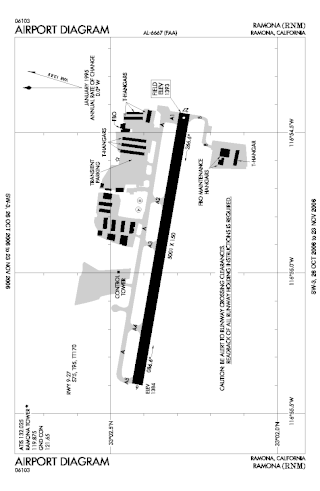
Ramona Airport is a public airport two miles west of Ramona, in San Diego County, California, United States.
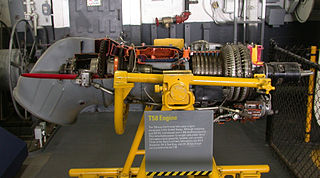
The General Electric T58 is an American turboshaft engine developed for helicopter use. First run in 1955, it remained in production until 1984, by which time some 6,300 units had been built. On July 1, 1959, it became the first turbine engine to gain FAA certification for civil helicopter use. The engine was license-built and further developed by de Havilland in the UK as the Gnome, in the West Germany by Klöckner-Humboldt-Deutz, and also manufactured by Alfa Romeo and the IHI Corporation.

The American Helicopter Museum & Education Center (AHMEC) is located at 1220 American Boulevard, West Chester, Pennsylvania, United States. The transport museum focuses on the history, science and technology of rotary wing aviation. The collection contains over 40 civilian and military, autogyros, convertiplanes and helicopters, including some early generation models. The museum also has an extensive research library, the Renzo Pierpaoli Memorial Library, which contains documents, artifacts, films, and memoirs that museum members can use.

The Sikorsky XH-39, developed by Sikorsky Aircraft in 1954, was the U.S. Army's first turbine-powered helicopter. It was fast and innovative, but ultimately rejected by the United States Army in favor of the Bell UH-1 Iroquois.

The Sikorsky S-52 is a utility helicopter developed by Sikorsky Aircraft in the late 1940s. It was used by the U.S. Navy, Marine Corps, and Coast Guard. The S-52 was the first US helicopter with all-metal rotor blades. Initially a two-seater, it was developed into the four-seat S-52-2 and S-52-3. It was designated HO5S-1 by the U.S. Navy and Marine Corps, HO5S-1G by the Coast Guard, and YH-18A by the U.S. Army, and was used extensively by civil operators after being retired by the military.

The Alaska Aviation Museum, previously the Alaska Aviation Heritage Museum, is located on Lake Hood Seaplane Base in Anchorage, Alaska. Its mission since 1988, is to preserve, display, and honor Alaska's aviation heritage, by preserving and displaying historic aircraft, artifacts, and memorabilia, and to foster public interest in aviation and its history. The museum has over thirty aircraft on display, a restoration hangar, flight simulators, two theaters, and a Hall of Fame. It provides an emphasis on historic aircraft, aviation artifacts, and memorabilia that contributed to the development and progress of aviation in Alaska, including Bush flying, and the World War II Army base on Adak Island.

The Bell H-13 Sioux is an American single-engine light helicopter built by Bell Helicopter and manufactured by Westland Aircraft under license for the British military as the Sioux AH.1 and HT.2.

Future Vertical Lift (FVL) is a plan to develop a family of military helicopters for the United States Armed Forces. Five different sizes of aircraft are to be developed, sharing common hardware such as sensors, avionics, engines, and countermeasures. The U.S. Army has been considering the program since 2004. FVL is meant to develop replacements for the Army's UH-60 Black Hawk, AH-64 Apache, CH-47 Chinook, and OH-58 Kiowa helicopters. The precursor for FVL is the Joint Multi-Role (JMR) helicopter program.
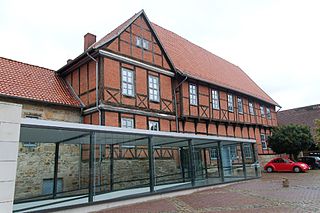
The Hubschraubermuseum Bückeburg is located in the German town of Bückeburg, 30 miles (50 km) to the west of Hanover. The museum is the sole museum in Germany specialising in rotary-wing flight and one of few worldwide. The museum is dedicated to the history and technology of the helicopter.


